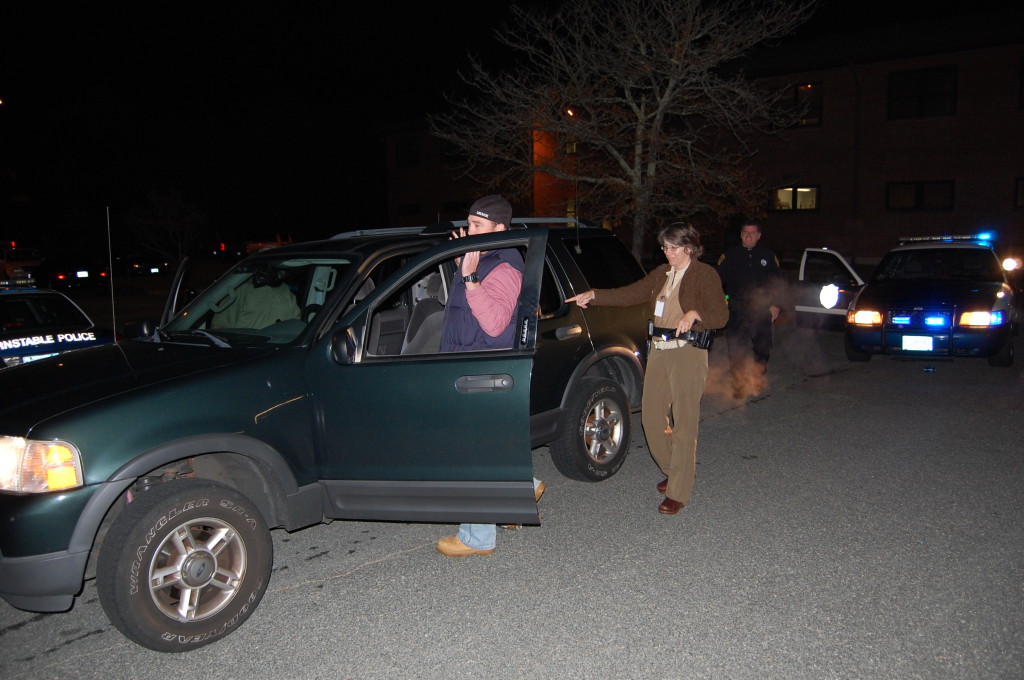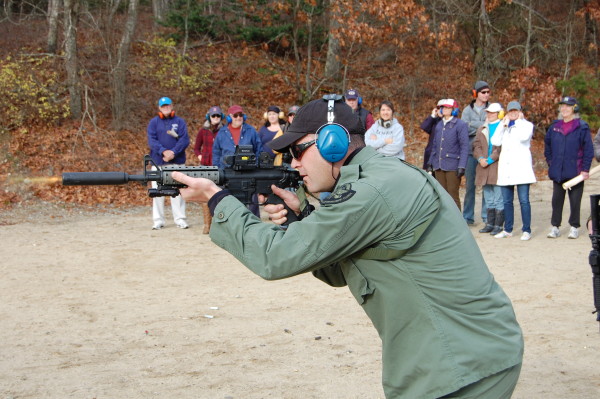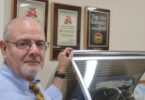
The author in a role-playing scenario where she pulls over a car with suspicious characters in it. “Get back in the car!”
BARNSTABLE – Police don’t always get a good rap.
The Barnstable Police Department seeks to upend any negative impressions people may have with its Citizen’s Police Academy, a wildly successful marketing strategy that is now taking applicants for its 26th session.
Over the years, about 800 people have graduated from the Barnstable Citizens Police Academy, a 13-week class that gives citizens an inside perspective on local police work.
I am one of those graduates and I have the diploma, academy windbreaker and photo with the chief of police to prove it.
My credentials do not entitle me to make arrests; it’s more like bragging rights. This academy is not for slouches.
Yes, I drove a squad car, learned how to use handcuffs, shot a police pistol in target practice; and rode along on a snowy Saturday night shift.
I listened intently as police talked about drugs, domestic violence and suspects for that day’s bank robbery.
There were lighter moments like learning about Deputy Chief Craig A. Tamash’s collection of 7,000 police patches.
We also got an insider’s view of police officers’ snacking preferences during a back and forth about what food we were to bring as a nightly potluck. Our able academy director Barnstable Police Sergeant Arthur G. Caiado preferred rollwiches while Detective Kevin Connolly urged more creativity, along the lines of beef stew. (This was no idle debate. The leftovers went to hungry officers on the night shift.)
We learned about tasers and “verbal judo,” two distinct ways to deal with suspects.
































